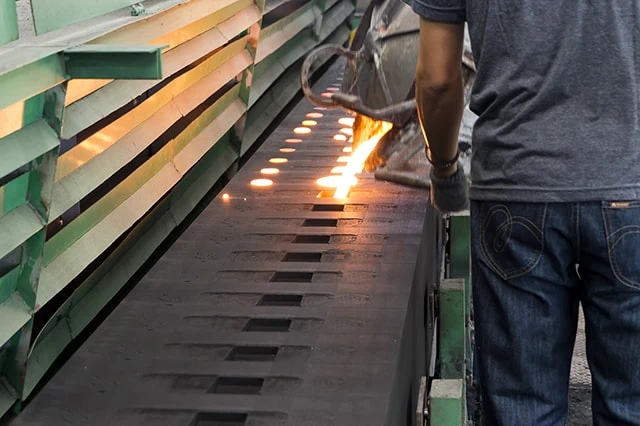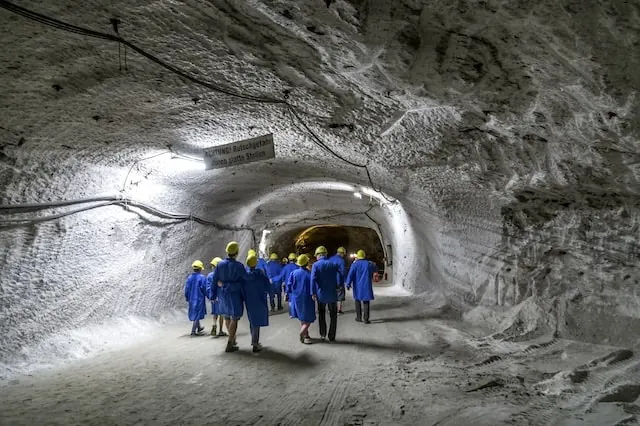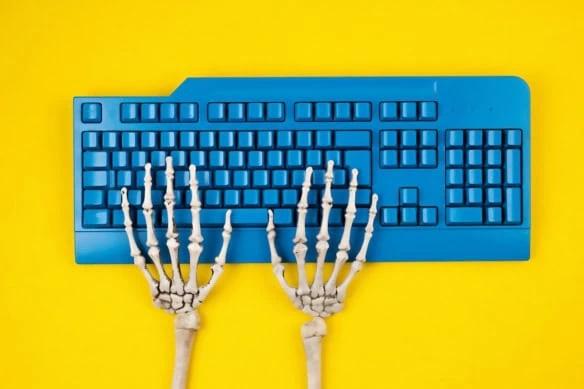The job market is always in flux. Jobs that are only now coming to the fore could be one of the most common workplace roles in just a few years. And some of today’s hottest jobs could be tomorrow’s dying careers.
I mean, imagine telling people during America’s Industrial Revolution that you were going to be a social media manager, mobile app developer, or cloud architect. No one would’ve known what you were talking about. In fact, they probably would’ve questioned your sanity.
But all of those jobs have risen to prominence—while jobs like telegraphists, elevator operators, and knocker-uppers have all but vanished.
What causes a career to fall out of favor? Well, it’s a mix of drivers. Sometimes it’s purely technological—a machine or other technology simply renders a manual task obsolete. Sometimes it’s just a lack of demand. And sometimes it’s a change in business model; for instance, while people still want other people to drive them around, they’re increasingly using Uber and Lyft contractors rather than taxi drivers. (And in a few years, it could even be self-driving cars.)
In other words, if you’re looking to start along a new career path, there’s no way to guarantee that what you’re interested in doing will be around tomorrow. But you can tilt the odds in your favor by looking to see which careers are already showing signs of stumbling.
So, which of today’s careers could find themselves on the outs in the relatively near future? Today, I’m going to look at 15 jobs that are dying more quickly than others.
Table of Contents
About the Information

The data used to find the fastest-dying careers comes from the U.S. Bureau of Labor Statistics Occupational Outlook Handbook.
Specifically, I’ve looked at the BLS’s projections for changes in employment across more than 800 industries between 2022 and 2032. A quick look at how BLS makes those projections:
“Bureau of Labor Statistics projections of industry and occupational employment are developed in a series of six interrelated steps, each of which is based on a different procedure or model and assumptions: labor force, aggregate economy, final demand (GDP) by consuming sector and product, industry output, industry employment, and employment and openings by occupation.”
From there, I zoomed in on the industries expected to see the greatest rate of decline in employment over the 10-year period.
Today’s Fastest Disappearing Jobs

Here’s a look at the most quickly declining jobs as outlined by the Bureau of Labor Statistics. These jobs are listed in reverse order of their rate of decline (ergo, the slowest decliner is first, and the fastest decliner is last).
15. Telemarketers

— 2022 employment: 97,700
— Projected employment change (by 2032): -20,100
— Growth rate: -20.6%
Any time you get a phone call from someone trying to solicit donations or get you to place orders for goods or services, you’re talking to a telemarketer. During a cold call, telemarketers either read from a script or use in-depth knowledge of a product to convince listeners to break out their wallets. They keep track of who they called and any orders placed.
Usually, there are no formal educational requirements for this career. Training may last a few months or up to a year. Recent high school graduates or college students sometimes take this on as a temporary job with either part- or full-time hours.
Technological advances are responsible for much of this field’s decline. To start, online advertising currently holds more appeal for marketers, as they can reach more people and more easily target those most likely to be interested in a product. Additionally, caller ID makes it easier for people to screen their calls, and many people are signed up for the National Do Not Call Registry.
14. Executive Secretaries + Executive Administrative Assistants

— 2022 employment: 511,100
— Projected employment change (by 2032): -108,100
— Growth rate: -21.2%
Executive secretaries and executive administrative assistants offer a higher level of administrative support than secretaries without the “executive” title (this employment category excludes non-executive secretaries). These employees’ tasks often include preparing reports, conducting research, and answering information inquiries, as well as routine administrative functions.
Typically, this type of work requires vocational school training, an associate’s degree, or relevant experience. Additionally, once hired, people can expect one to two years of training.
Why is this field declining? Technology has changed the game in a few ways. Some of the tasks previously given to executive secretaries and assistants are now easier for higher-level workers to handle. For example, online calendars make it easier for managers to handle their own schedules and more executives are able to book their own travel. As some tasks fall away, these workers’ jobs are sometimes consolidated.
Related: 10 Best Dividend Stocks to Buy [Steady Eddies]
13. Patternmakers, Metal & Plastic

— 2022 employment: 2,300
— Projected employment change (by 2032): -500
— Growth rate: -21.7%
Within the industry of metal and plastic machine workers are patternmakers. These workers fit and assemble castings and parts to foundry patterns and core molds.
Usually, a high school diploma is enough education to get a job in this industry; once hired, workers receive moderate-term on-the-job training.
The decline in the employment of patternmakers (metal and plastic) is largely a result of new software. Nowadays, software can create digital and 3D print prototypes, and in general, automation has hit patternmakers hard. It’s not just metal and plastics patternmakers, either—wood patternmaker careers are falling off, too.
Related: 7 Best Schwab ETFs to Buy [Build Your Core for Cheap]
12. Pressers, Textile, Garment & Related Materials

— 2022 employment: 29,800
— Projected employment change (by 2032): -6,500
— Growth rate: -21.8%
That crisp feeling of new or freshly dry-cleaned clothing comes from workers such as dry clean pressers, boarders, ironing machine operators, and more, which all fall under the occupational umbrella of pressers, textile, garment, and related materials. The workers press or shape materials either with a machine or by hand—it’s a job that requires no formal education and very little, short-term on-the-job training.
So, why the expected decline? The vast majority of these workers are within the industry of dry cleaning and laundry services. And as a whole, that industry has been declining for nearly two decades.
That’s partly because of a long trend away from ultra-professional dress codes at work—full suits have given way to khakis and button-ups, which themselves have given way to jeans and polos. This trend accelerated during the pandemic, as many dress codes went out the door as soon as work-from-home policies were put in place. Even as some people return to the office, they’re often doing so only part of the time, and under a much looser dress code than was enforced pre-COVID.
Also putting pressure on dry cleaners over the past few years have been U.S. Environmental Protection Agency (EPA) restrictions on the use of perchloroethylene—a dry cleaning solvent that the EPA says “presents an unreasonable risk to human health.”
Related: 7 Best Fidelity ETFs for 2024 [Invest Tactically]
11. Legal Secretaries & Administrative Assistants

— 2022 employment: 161,400
— Projected employment change (by 2032): -35,300
— Growth rate: -21.9%
In general, secretaries and administrative assistants handle a variety of clerical and organizational tasks, such as scheduling appointments, basic bookkeeping, and handling mail. Legal secretaries and administrative assistants might do some or all of the above, but also prepare legal papers and sometimes help with legal research.
Legal secretaries and administrative assistants should be familiar with legal terminology and procedures. Thus, while more generalist positions can be filled by people who have earned a high school diploma, within the legal industry, more study is usually required—at least some amount of vocational school or an associate’s degree.
Part of the expected employment decline can be attributed to technology. New tech allows some lawyers to prepare their own documents, which previously a legal secretary would have done. Additional advancements in technology could rattle the industry, too. For instance, a 2023 Thomson Reuters survey of law firms found that 82% of surveyed lawyers believe generative artificial intelligence and ChatGPT can be applied to legal work … though only just over half believe it should be.
Related: The 7 Best Vanguard ETFs for 2024 [Build a Low-Cost Portfolio]
10. Manufactured Building + Mobile Home Installers

— 2022 employment: 4,100
— Projected employment change (by 2032): -900
— Growth rate: -22.0%
Manufactured building and mobile home installers move and/or install prefabricated buildings or mobile homes. The typical entry-level education is a high school diploma or equivalent and they receive short-term on-the-job training.
The pandemic was a tough time for manufactured housing thanks to supply chain disruptions, order cancellations, and labor reduction. State and local ordinances related to the pandemic also affected some home sales.
However, the decline in this type of housing isn’t just recent. Manufactured homes, as a share of overall homes sold, started to decline around the turn of the century and have remained stubbornly low for the better part of the past two decades. That’s in part thanks to restrictions regarding zoning and land use.
Looking forward, higher property taxes, conversion of mobile-home sites to other uses, and even negative stereotypes about manufactured homes may continue to reduce the use of this type of housing. And that in turn could lead to an employment decline for people who install these homes.
Related: 7 Best Wealth + Net Worth Tracker Apps [View All Your Assets]
9. Foundry Mold + Coremakers

— 2022 employment: 11,500
— Projected employment change (by 2032): -2,700
— Growth rate: -23.5%
Foundry mold and coremakers create or form wax or sand cores or molds that are used to produce metal castings in foundries. This job typically requires a high school diploma or equivalent, though computer numerically controlled machine tool programmers usually need additional coursework. Workers also often need to train for at least a few months working alongside experienced employees.
Explanations for the BLS’s projections for significant declines in this field? Well, there’s a big risk of automation, given that it primarily involves predictable, repetitive tasks; technicians can set up and maintain the automated mold-making machinery. Also, foreign competition is reducing the demand for U.S. molders. Even currently, people entering the field are rarely entering newly created jobs—they’re usually replacing people who are either retiring or switching fields.
Related: Stop Shrinkflation! 10 Products Affected + Tips to Save Money
8. Timing Device Assemblers + Adjusters

— 2022 employment: 400
— Projected employment change (by 2032): -100
— Growth rate: -25.0%
Timing device assemblers and adjusters do precision assembling or adjusting of digital clocks and other timing devices with electrical or electronic components. (Note: Watchmakers fall within a different employment category.) Usually, the entry-level education necessary is a high school diploma or equivalent; workers also receive moderate on-the-job training. Some states require an occupational license for this career.
This represents an extremely narrow field within the larger assembler and fabricators industry, which itself is projected to decline, but at a much slower rate (6%). Timing device assemblers and adjusters only account for a few hundred jobs within an industry that employs nearly 2 million Americans.
This field has highly repetitive skills that don’t require much human judgment, putting them at high risk for automation. Indeed, “collaborative robotics” has already been introduced in this and other assembler and fabricator fields, lowering demand for these jobs.
Related: 7 Best High-Dividend ETFs for Income-Minded Investors
7. Switchboard Operators (Including Answering Service)

— 2022 employment: 48,400
— Projected employment change (by 2032): -12,100
— Growth rate: -25.0%
Switchboard operators, as the name suggests, operate switchboards and other telephone business systems to relay calls. Some people might also give information to callers and record messages. You can typically get into this job with a high school diploma or equivalent, and you’ll probably receive some short-term on-the-job training.
If you’re surprised to find that this occupation still exists, you’re probably not alone—indeed, this field currently employs more than 48,000 people!
But you won’t be surprised to hear that the BLS expects employment to drop by a full quarter by 2032. Switchboard operations are already largely done by automated systems, and that trend should only continue in the years to come.
Like Young and the Invested’s Content? Be sure to follow us.
6. Data Entry Keyers

— 2022 employment: 165,600
— Projected employment change (by 2032): -43,100
— Growth rate: -26.0%
Data entry keyers operate data entry devices like keyboards (or, as the BLS lists, photocomposing perforators). This isn’t the same thing as a word processor or typist—in many cases, workers in this field will also verify data and prep materials for printing.
The typical entry-level education necessary for these workers is a high school diploma or equivalent. Once hired, workers typically receive some short-term on-the-job training.
Data entry is among the jobs most at risk because of artificial intelligence. As AI can process and analyze high amounts of data, it reduces the need for manual data entry by human workers. And it’s not a small field, either—a little more than 165,000 people are employed as data entry keyers, and employment in that field is expected to shrink by over 43,000 by 2032.
Related: The 7 Best Dividend ETFs [Get Income + Diversify]
5. Telephone Operators

— 2022 employment: 4,100
— Projected employment change (by 2032): -1,100
— Growth rate: -26.8%
Telephone operators give callers information from directories and assist with special billing requests. Some of these workers handle emergency calls or help children or people with physical disabilities make telephone calls.
Operator positions typically require only a high school diploma or equivalent, and workers are given short-term on-the-job training.
Importantly, this job isn’t customer service—instead, it’s closer to the directory services you would receive when you used to dial 0 or 411. And this job has been evaporating for decades; the field employed more than 400,000 people during the 1970s but employs just more than 4,000 today.
Expect that number to continue to contract. Most people can now easily look up information online, reducing the need for 411 and similar services. For instance, AT&T ended operator services for wireless callers in 2021, then stopped it for digital landlines in 2023. A handful of other major telephone providers still offer this service, but for a fee.
Related: How Are Social Security Benefits Taxed?
4. Cutters + Trimmers (Hand)

— 2022 employment: 8,300
— Projected employment change (by 2032): -2,300
— Growth rate: -27.7%
Cutters and trimmers don’t refer to hair stylists, but rather workers who use hand tools or handheld power tools to cut and trim manufactured items, such as carpet, fabric, glass, rubber, or stone.
There are no formal educational credentials necessary for this occupation. Workers receive short-term on-the-job training.
This is another career that automation systems are heavily disrupting. Cutters and trimmers boasted employment of 13,740 as of May 2012—a decade later, that number is down by roughly 40%. And the BLS projects that current trends will continue, leading to thousands of more roles disappearing by 2032.
Related: How to Get Free Stocks for Signing Up: 10 Apps w/Free Shares
3. Roof Bolters (Mining)

— 2022 employment: 1,800
— Projected employment change (by 2032): -500
— Growth rate: -27.8%
Roof bolters use machinery to install roof support bolts in underground mines. Minimum education requirements are typically limited to a high school diploma or equivalent, though workers often receive moderate-term on-the-job training.
Health and safety can sometimes be an issue in the mining industry. Therefore, researchers have been searching for ways to make it safer. One of the paths that could lead to increased safety is roof bolting automation.
Advancements might make it possible for miners to control roof bolting equipment remotely, which would lower their exposure to hazardous airborne dust and decrease their risk of injury from roof falls. The improved efficiency, however, could also reduce the number of human workers needed.
Related: The 7 Best Vanguard Index Funds for Beginners
2. Watch + Clock Repairers

— 2022 employment: 2,100
— Projected employment change (by 2032): -600
— Growth rate: -28.6%
Watch and clock repairers—a category that includes watchmakers, watch technicians, and mechanical timepiece repairers—fix, clean and adjust watches and other timepieces.
The typical entry-level education isn’t much—just a high school diploma or equivalent—but requires a lot of on-the-job training.
In true supply-and-demand fashion, the decline of watch and clock repairers is likely reflecting a decline in demand for the kind of watches you have cleaned and repaired. On the one hand, you have people that buy inexpensive watches or clocks then replace them when necessary. On the other hand, people who are spending significantly on watches are spending more of that money on smartwatches. (And if it were to stop working, I’d have to contact Apple rather than seeking out a watch repairer.)
This hasn’t been an enormous field in a long time, but it’s still rapidly shrinking. There were 3,710 watch repairers employed in 2002, then 2,670 in 2012. It’s down to 2,100, and that number is expected to drop by another 600 people employed by 2032.
Like Young and the Invested’s Content? Be sure to follow us.
1. Word Processors + Typists

— 2022 employment: 44,000
— Projected employment change (by 2032): -17,000
— Growth rate: -38.6%
Word processors and typists type forms, letters, reports, and other materials. They might start with a rough draft, already corrected copy, or a voice recording. Some of these workers are also responsible for other clerical duties. (Importantly, this field doesn’t include secretaries, administrative assistants, court reporters, and simultaneous captioners, all of which have their own specific sets of skills.)
Usually, the entry-level education level is a high school diploma or equivalent, and workers receive short-term on-the-job training.
This field is in seemingly terminal decline. For a long time, that was because U.S. firms increasingly outsourced these jobs internationally. But more recently, growth in automation and artificial intelligence has weighed on the field; with just a little human input, robot technology can handle these tasks.
In 2002, more than 209,000 people were employed as word processors or typists. That number was cut by more than half, to 96,560, as of 2012, then by more than half again, to 44,000, as of 2022. Technically, the rate of decline is expected to slow through 2032, but at a still-rapid pace of nearly 40%.
Related: 12 Best Long-Term Stocks to Buy and Hold Forever
Related: 6 Best Stock Recommendation Services [Stock Picking + Tips]

Stock recommendation services are popular shortcuts that help millions of investors make educated decisions without having to spend hours of time doing research. But just like, say, a driving shortcut, the quality of stock recommendations can vary widely—and who you’re willing to listen to largely boils down to track record and trust.
The natural question, then, is “Which services are worth a shot?” We explore some of the best (and best-known) stock recommendation services.
Related: 12 Best Long-Term Stocks to Buy and Hold Forever
As even novice investors probably know, funds—whether they’re mutual funds or exchange-traded funds (ETFs)—are the simplest and easiest ways to invest in the stock market. But the best long-term stocks also offer many investors a way to stay “invested” intellectually—by following companies they believe in. They also provide investors with the potential for outperformance.
So if your’e looking for a starting point for your own portfolio, look no further. Check out our list of the best long-term stocks for buy-and-hold investors.
Related: Best Target-Date Funds: Vanguard vs. Schwab vs. Fidelity

Looking to simplify your retirement investing? Target-date funds are a great way to pick one fund that aligns with when you plan to retire and then contribute to it for life. These are some of the best funds to own for retirement if you don’t want to make any investment decisions on a regular basis.
We provide an overview of how these funds work, who they’re best for, and then compare the offerings of three leading fund providers: Vanguard, Schwab, and Fidelity.
Related: 9 Best Monthly Dividend Stocks for Frequent, Regular Income

The vast majority of American dividend stocks pay regular, reliable payouts—and they do so at a more frequent clip (quarterly) than dividend stocks in most other countries (typically every six months or year).
Still, if you’ve ever thought to yourself, “it’d sure be nice to collect these dividends more often,” you don’t have to look far. While they’re not terribly common, American exchanges boast dozens of monthly dividend stocks.
Please Don’t Forget to Like, Follow and Comment

Did you find this article helpful? We’d love to hear your thoughts! Leave a comment with the box on the left-hand side of the screen and share your thoughts.
Also, do you want to stay up-to-date on our latest content?
1. Follow us by clicking the [+ Follow] button above,
2. Subscribe to The Weekend Tea, our weekly newsletter to read more about investing, spending, taxes, and more, and
3. Give the article a Thumbs Up on the top-left side of the screen.
4. And lastly, if you think this information would benefit your friends and family, don’t hesitate to share it with them!






